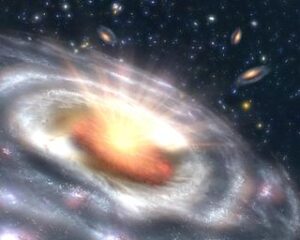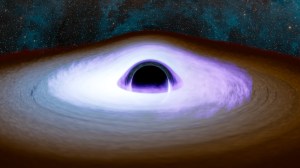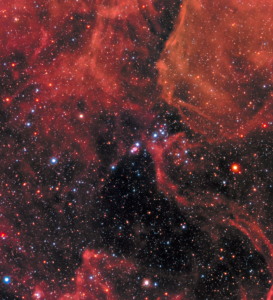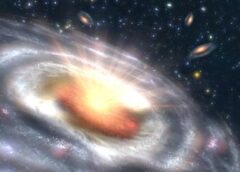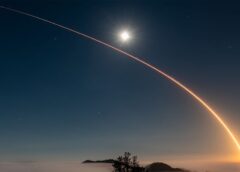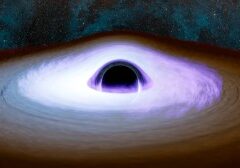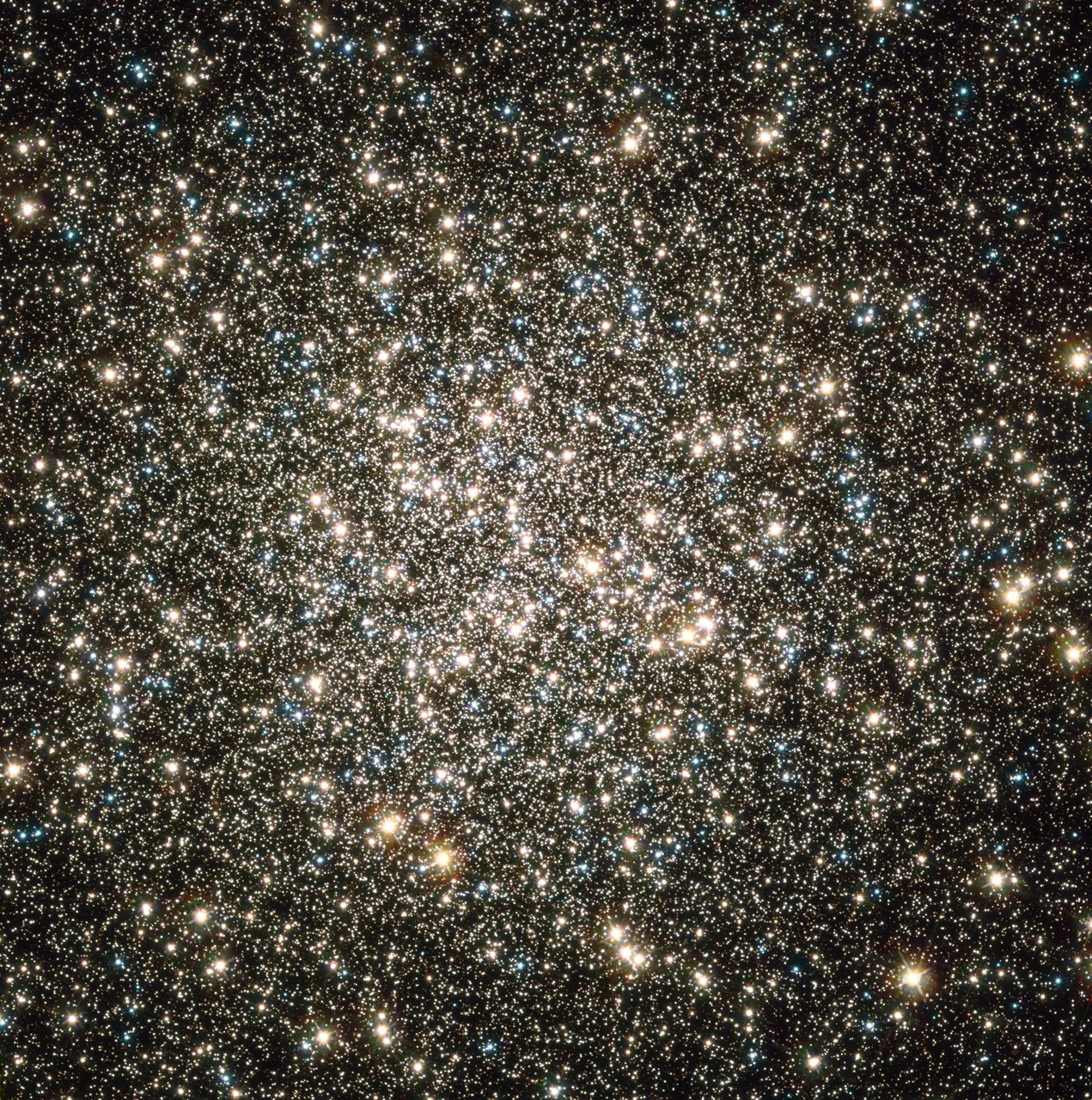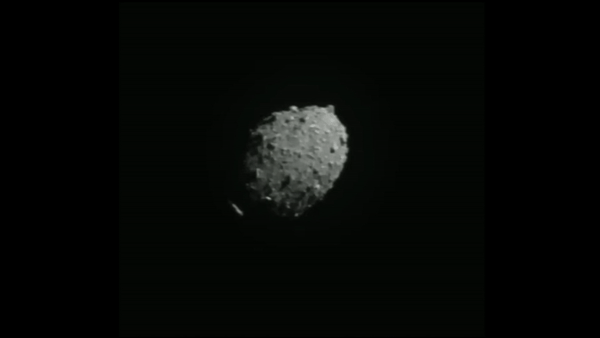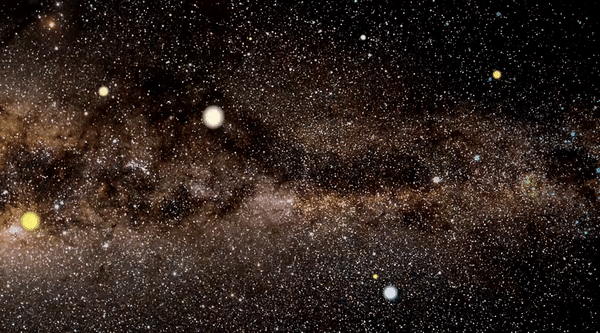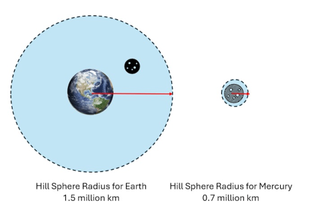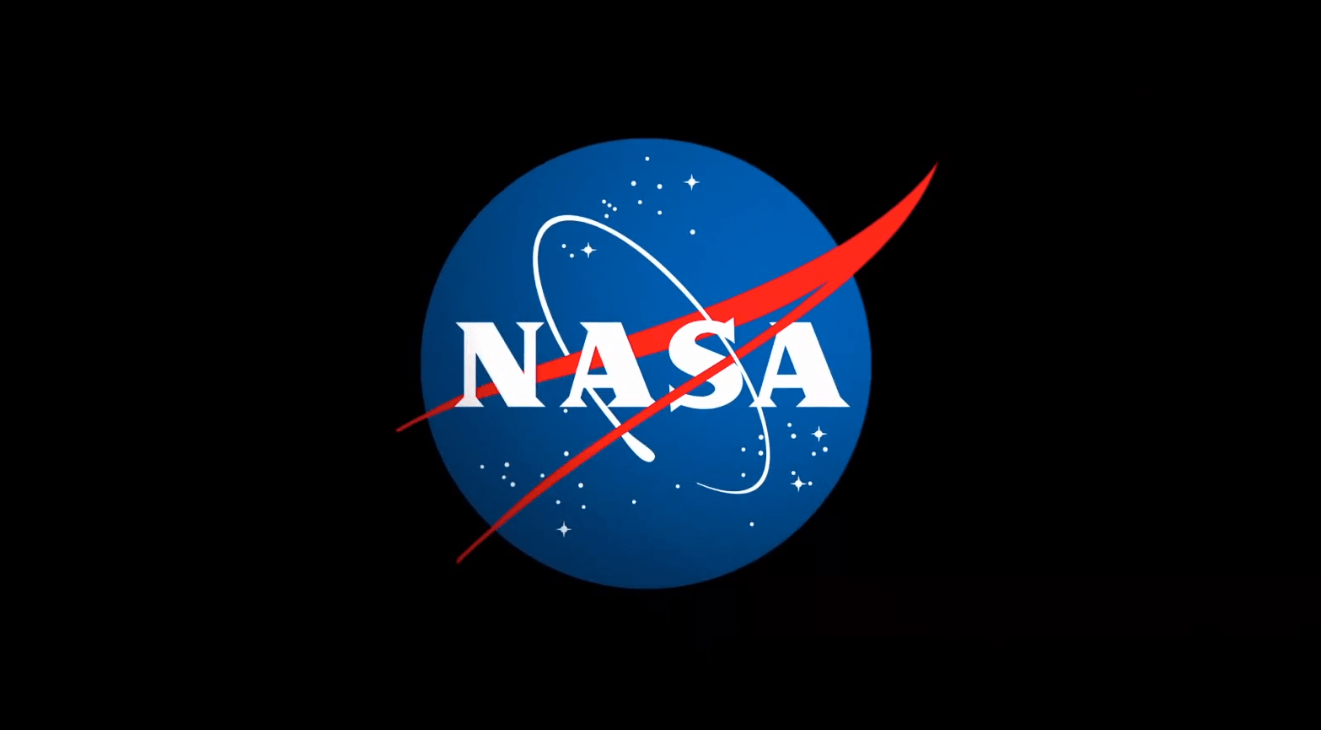3 Min Read July’s Night Sky Notes: A Hero, a Crown, and Possibly a Nova! Like shiny flakes sparkling in a snow globe, over 100,000 stars whirl within the globular cluster M13, one of the brightest star clusters visible from the Northern Hemisphere. Located 25,000 light-years from Earth with an apparent magnitude of 5.8, this glittering metropolis of stars in the constellation Hercules can be spotted with a pair of binoculars most easily in July. Credits: NASA by Vivan White of the Astronomical Society of the Pacific High in the…
Read MoreMars Odyssey celebrates 100,000 orbits, captures epic view of solar system’s largest volcano
NASA’s Odyssey spacecraft, the longest-running mission at Mars, circled the Red Planet for the 100,000th time today, the mission team announced in a statement. To celebrate the milestone, the space agency released an intricate panorama of Olympus Mons, the tallest volcano in the solar system; Odyssey captured the view in March. The volcano’s base sprawls 373 miles (600 kilometers) near the Martian equator while it soars 17 miles (27 kilometers) into the planet’s thin air. Earlier this month, astronomers discovered ephemeral morning frost coating the volcano’s top for a few…
Read MoreIt’s International Asteroid Day, and astronomers have much to celebrate
Today, astronomers and space lovers around the world are collectively marveling at our mercurial presence in the universe, particularly as we drift the cosmos amid large asteroids like the one that wiped out the dinosaurs 66 million years ago. June 30 marks Asteroid Day, a holiday observed annually to reflect on the prospect of a planet-destroying space rock striking Earth and what scientists are doing to mitigate that risk. The day is observed on the anniversary of the 1908 Tunguska event in Russia, when a space rock about half the…
Read MoreThe new space race: International partnerships (op-ed)
Charles Bolden served as the 12th NASA Administrator, making him only the second astronaut to hold that position. Bolden is the Founder & CEO Emeritus of The Charles F. Bolden Group Ambassador Stuart Holliday served as United States Ambassador for Special Political Affairs at the United Nations (2003-2005) after the President’s nomination and the Senate’s confirmation. Holliday is CEO of Meridian International Center, a leading non-partisan institution advancing global security and prosperity through effective leadership and diplomacy. President Joe Biden’s announcement in April 2024 that Japanese astronauts will join an…
Read MoreWhat are rogue planets?
A rogue planet is a world that has been ejected from the planetary system in which it originally formed. Because rogue planets do not orbit a parent star, they are cast adrift into interstellar space. On their meanderings, rogue planets are pulled toward whatever large, gravitationally attractive body they happen to pass by. Most rogue planets are ejected during the early stages of planetary formation when planetary systems are more chaotic and there is more interaction among planets, David Bennett, a senior research scientist at NASA’s Goddard Space Flight Center,…
Read MoreThis Week In Space podcast: Episode 117 —A Home on the Moon
On Episode 117 of This Week In Space, Rod Pyle and guest co-host Isaac Arthur talk with Evan Jensen of ICON Build about 3D printing habitats on the moon and one day Mars. For decades we’ve seen images of huge glass domes on the moon and Mars, but the reality of building settlements off-Earth is likely to look much different. This week we’re joined by Evan Jensen of ICON Build, a company that, in just a few years, has created housing across Texas via 3D printing. Now, in association with…
Read MoreWhy do some planets have moons? A physics expert explains why Earth has only one moon while other planets have hundreds
On Earth, you can look up at night and see the moon shining bright from hundreds of thousands of miles away. But if you went to Venus, that wouldn’t be the case. Not every planet has a moon – so why do some planets have several moons, while others have none? I’m a physics instructor who has followed the current theories that describe why some planets have moons and some don’t. First, a moon is called a natural satellite. Astronomers refer to satellites as objects in space that orbit larger bodies. Since a…
Read MoreNASA Awards Contract for Infrared Telescope Facility Operations
Credits: NASA NASA has selected the University of Hawaii in Honolulu to maintain and operate the agency’s Infrared Telescope Facility (IRTF) on Mauna Kea in Hilo, Hawaii. The Management and Operations of NASA’s IRTF is a hybrid firm-fixed-price contract with an indefinite-delivery/indefinite-quantity provision. The contract has a maximum potential value of approximately $85.5 million, with a base period of performance from Monday, July 1 to June 30, 2025. Nine optional periods, if exercised, would extend the contract through Dec. 31, 2033. Under this contract, the University of Hawaii will provide…
Read MoreNASA Announces Winners of Inaugural Human Lander Challenge
4 Min Read NASA Announces Winners of Inaugural Human Lander Challenge NASA’s 2024 Human Lander Challenge (HuLC) Forum brought 12 university teams from across the United States to Huntsville, Alabama, near the agency’s Marshall Space Flight Center, to showcase their innovative concepts for addressing the complex issue of managing lunar dust. The 12 finalists, selected in March 2024, presented their final presentations to a panel of NASA and industry experts from NASA’s Human Landing Systems Program at the HuLC Forum in Huntsville June 25-27. NASA’s lunar exploration campaign Artemis is…
Read MoreThe Maze is Afoot
NASA/JPL-Caltech This labyrinth – with a silhouette of the fictional detective Sherlock Holmes at its center – is used as a calibration target for the cameras and laser that are part of SHERLOC (Scanning Habitable Environments with Raman & Luminescence for Organics and Chemicals), one of the instruments aboard NASA’s Perseverance Mars rover. The image was captured by the Autofocus and Context Imager on SHERLOC on May 11, 2024, as the rover team sought to confirm it had successfully addressed an issue with a stuck lens cover. The Perseverance rover…
Read More